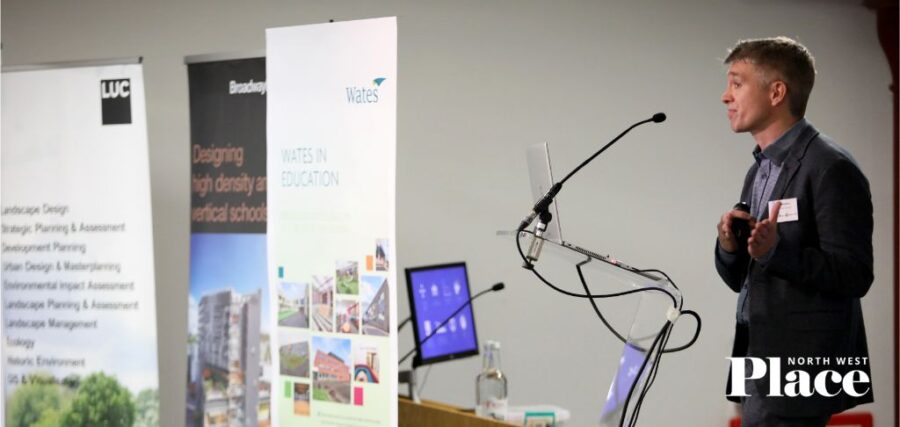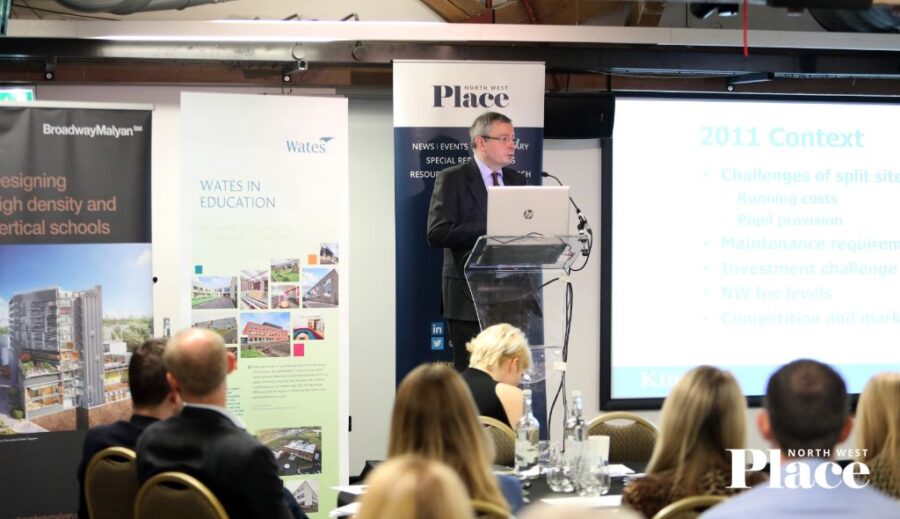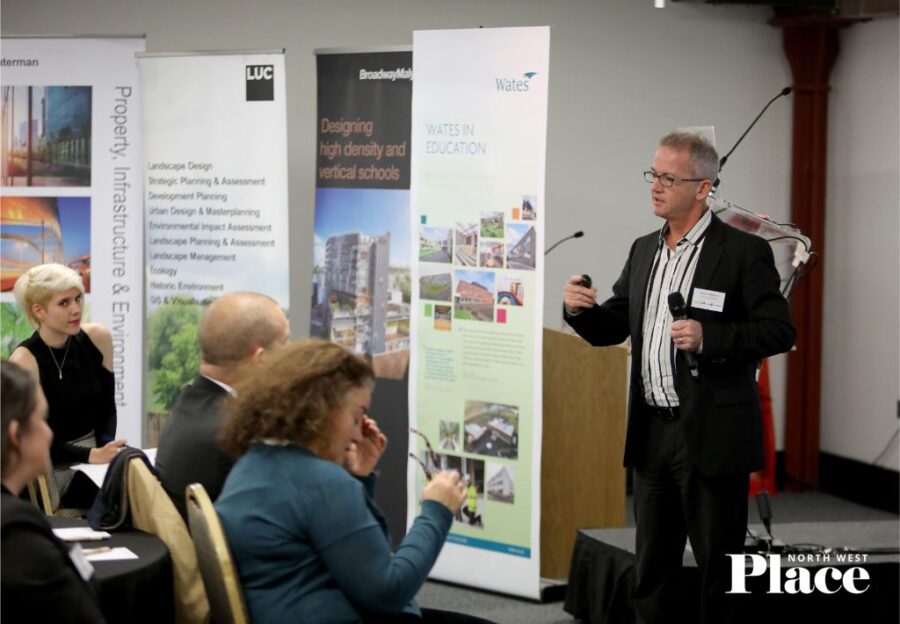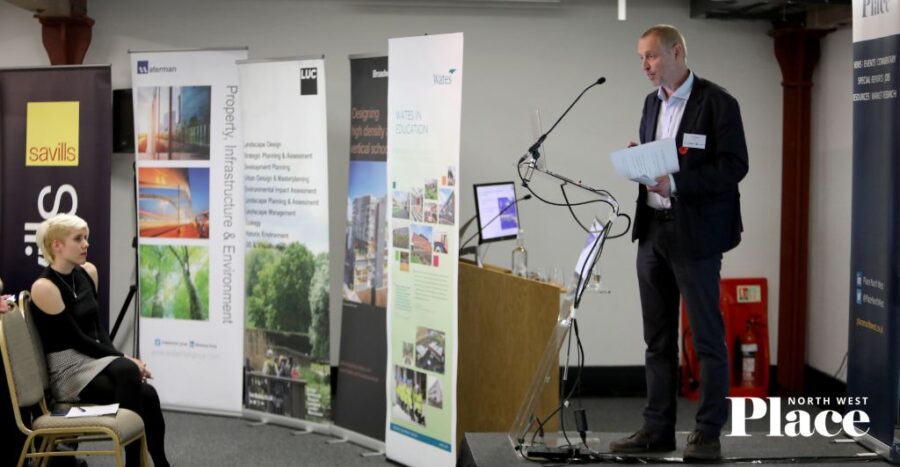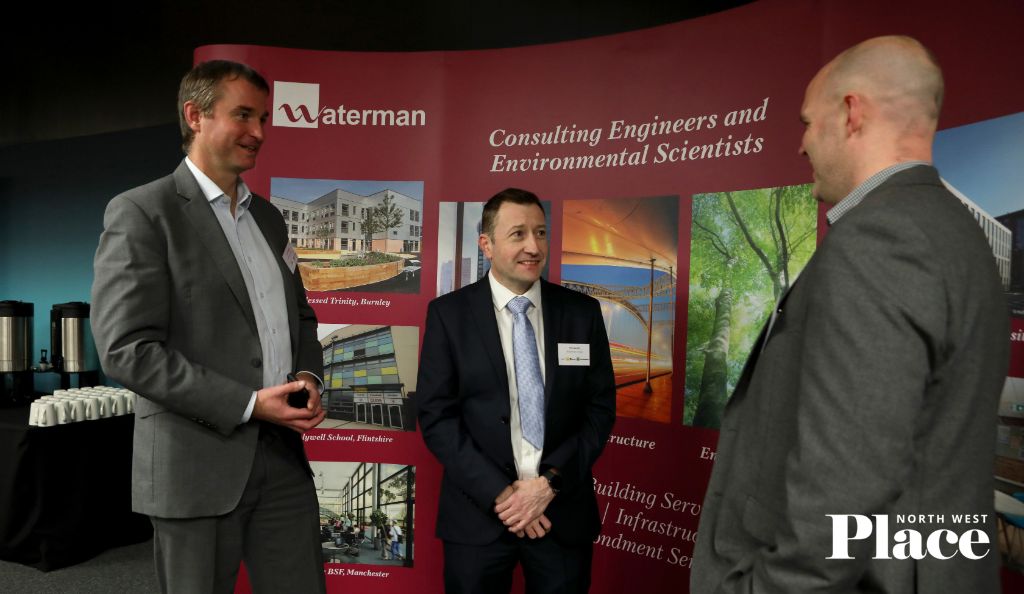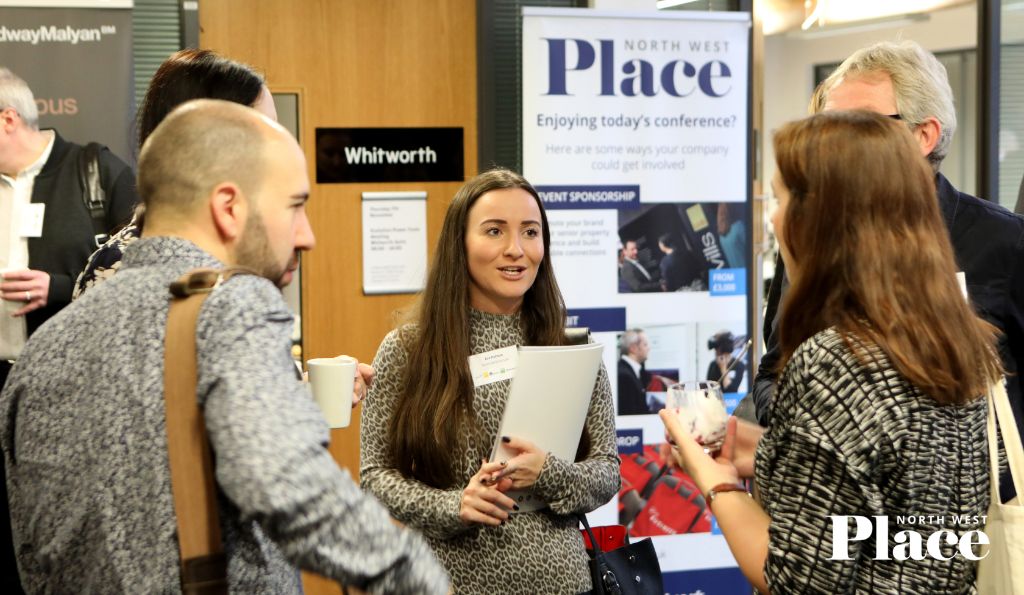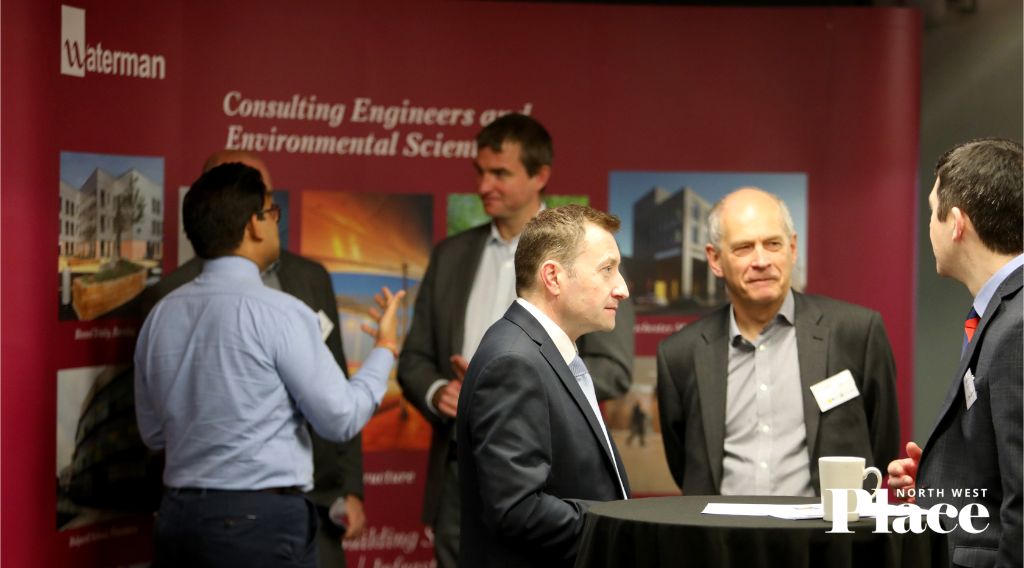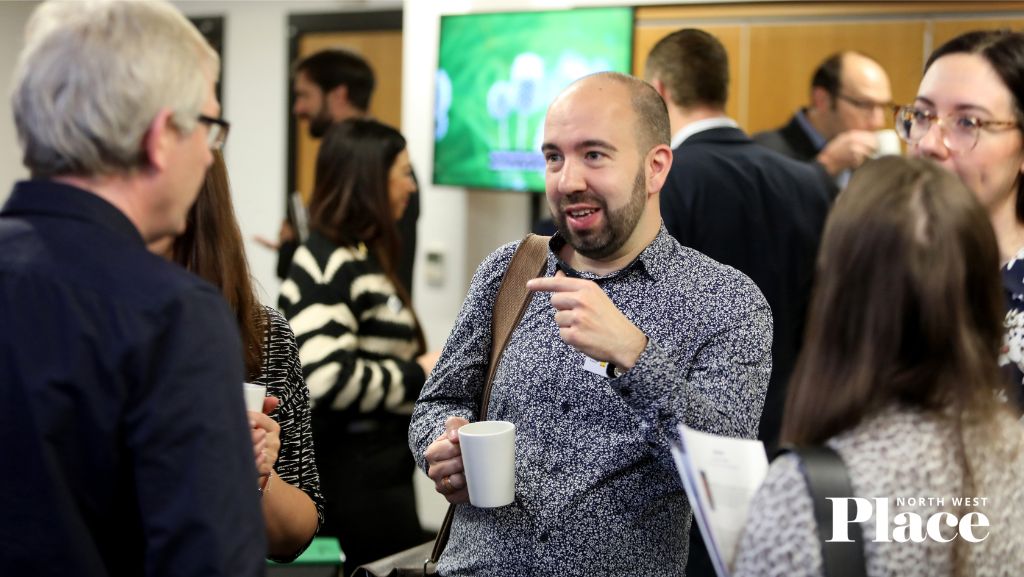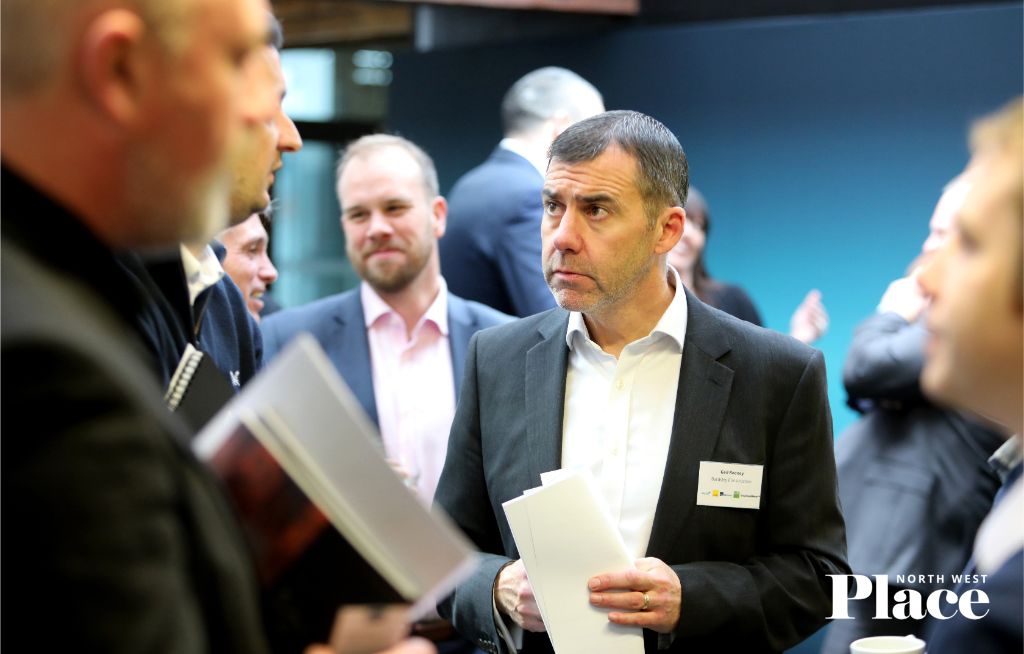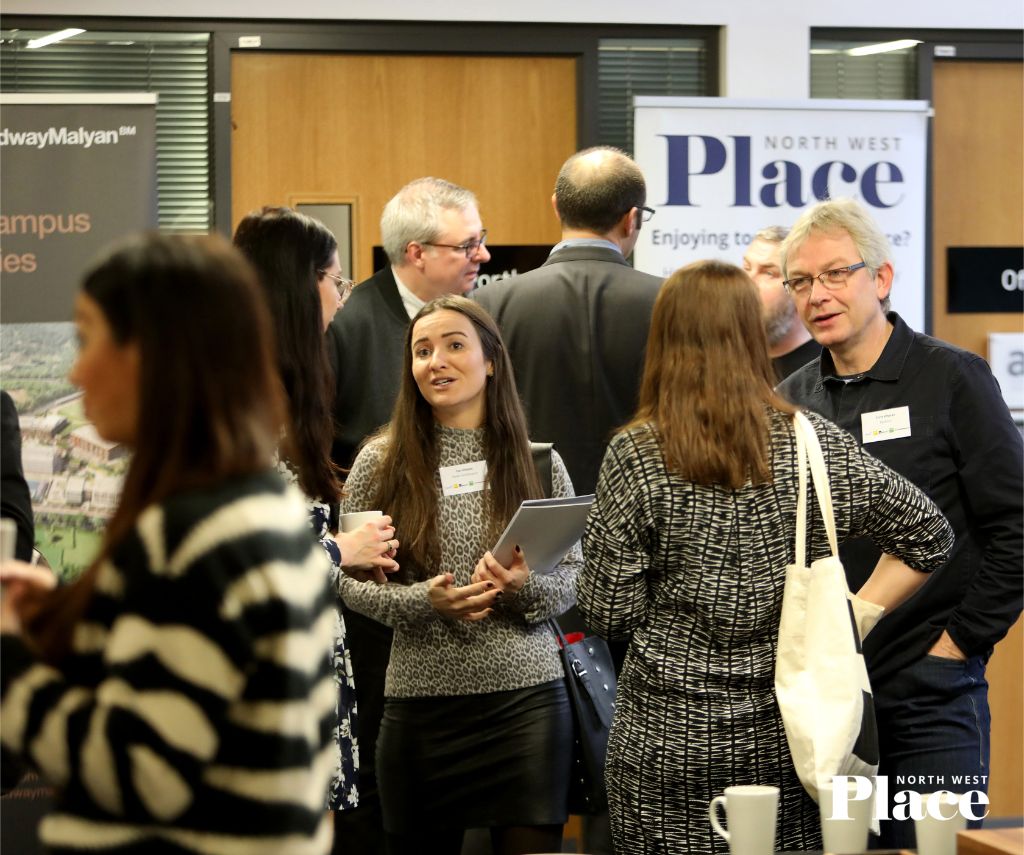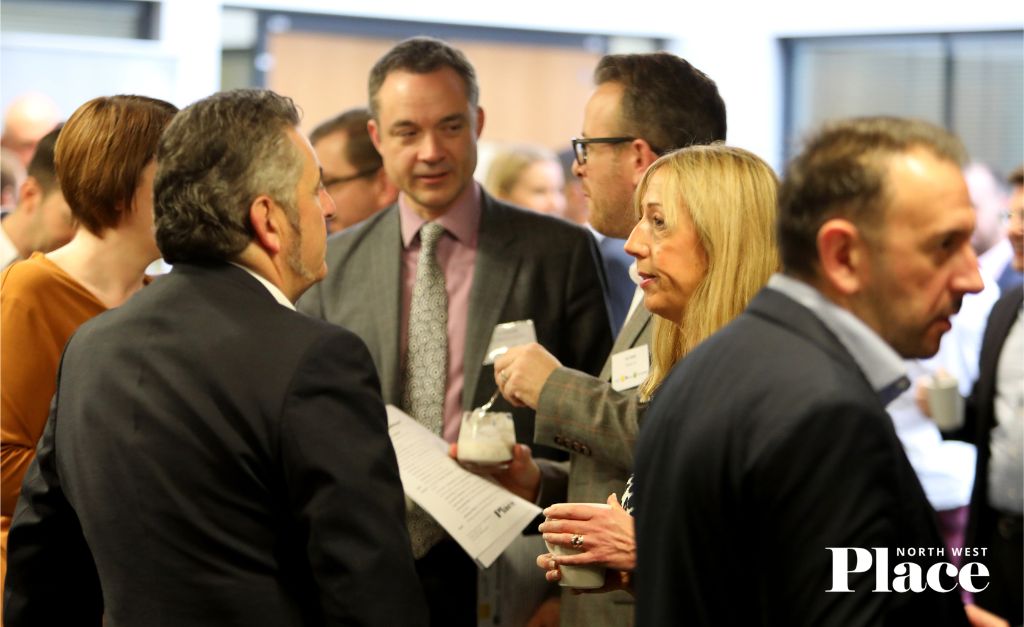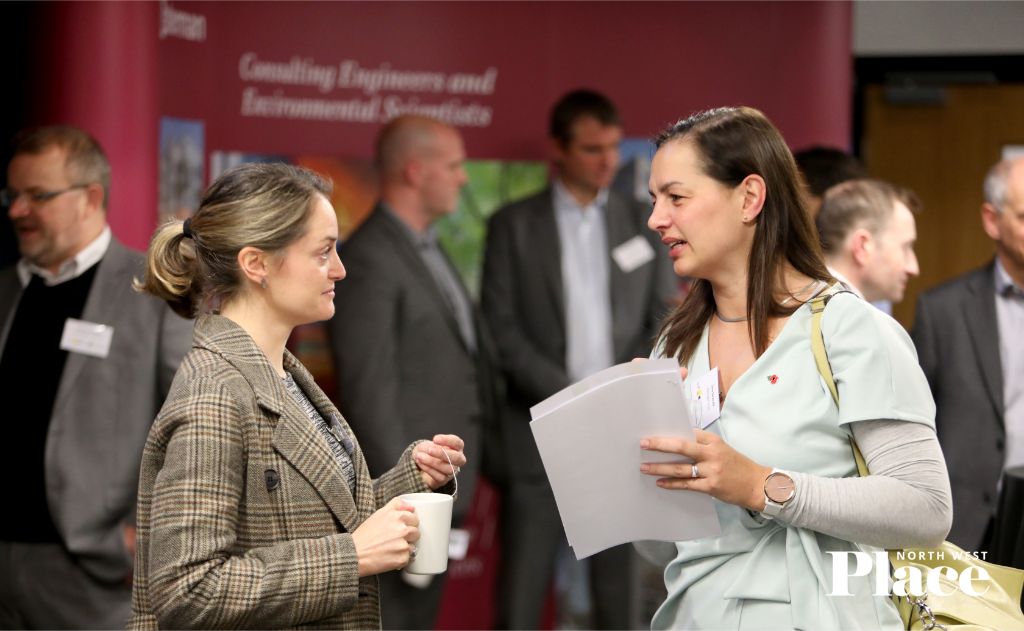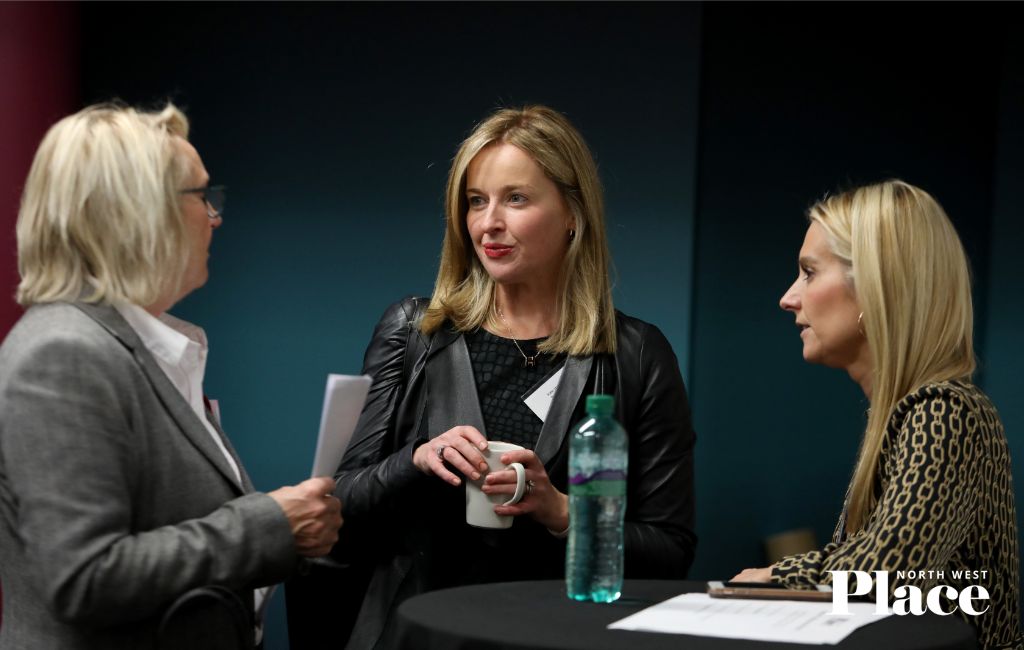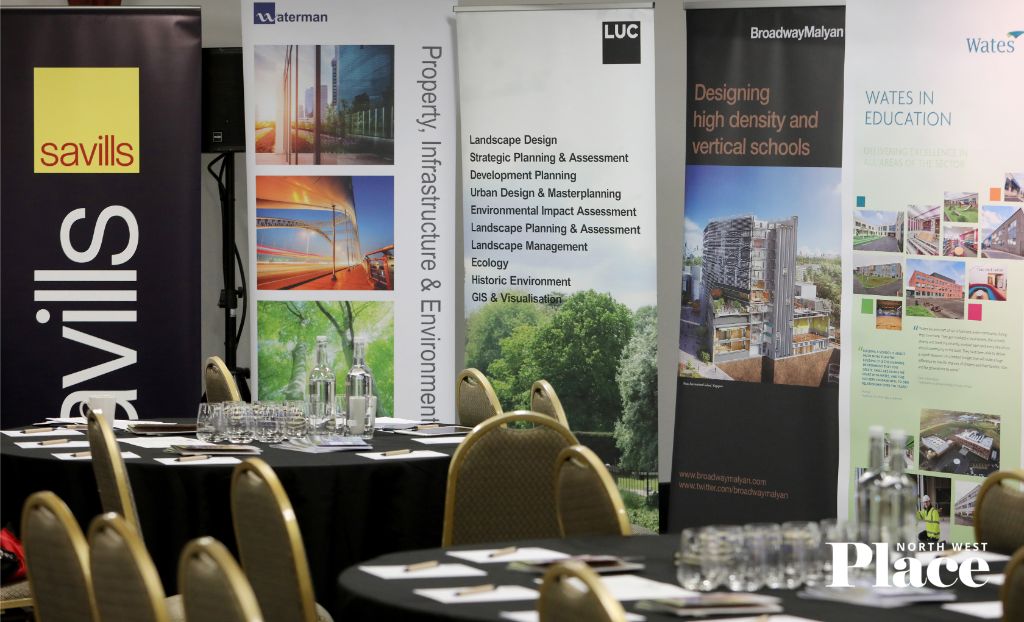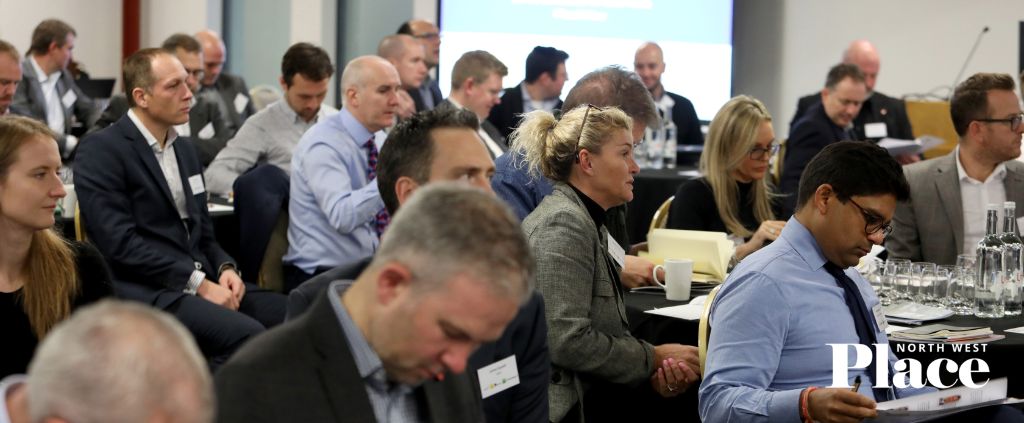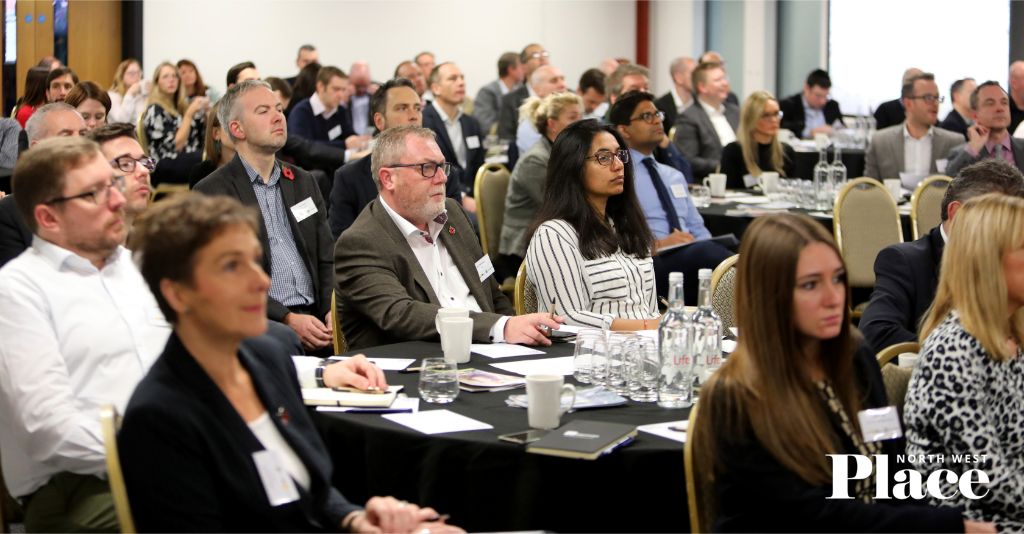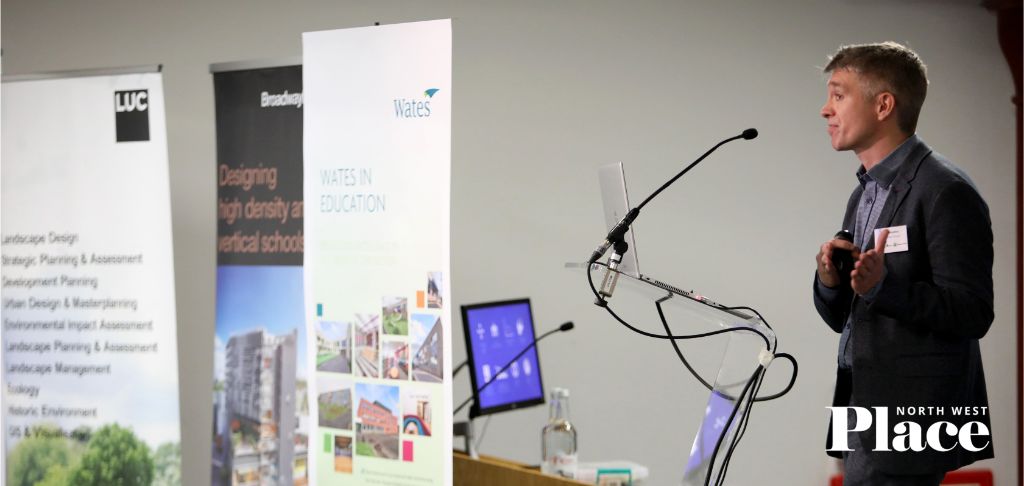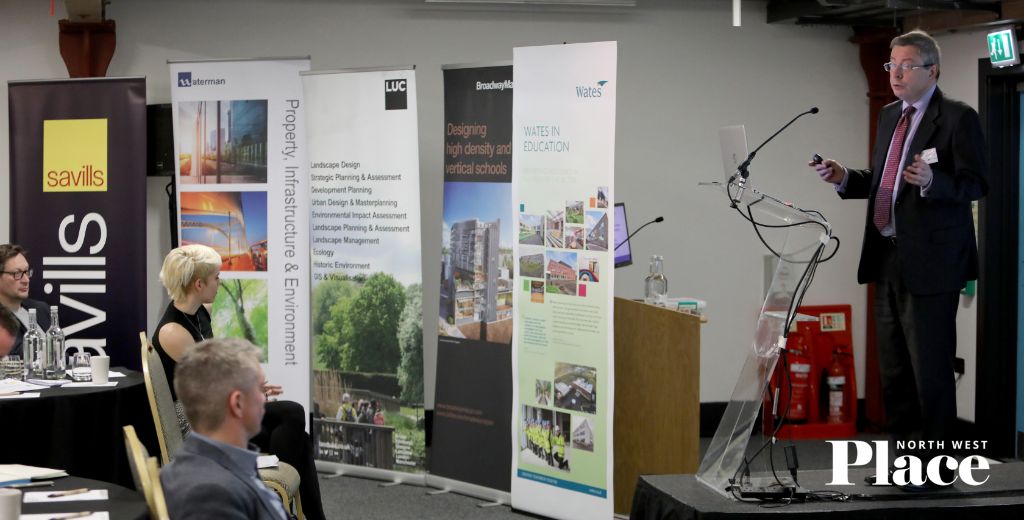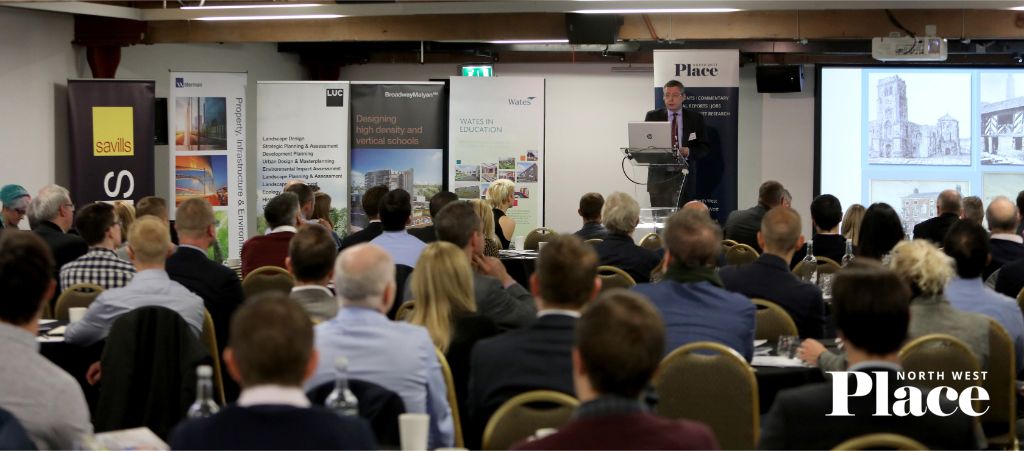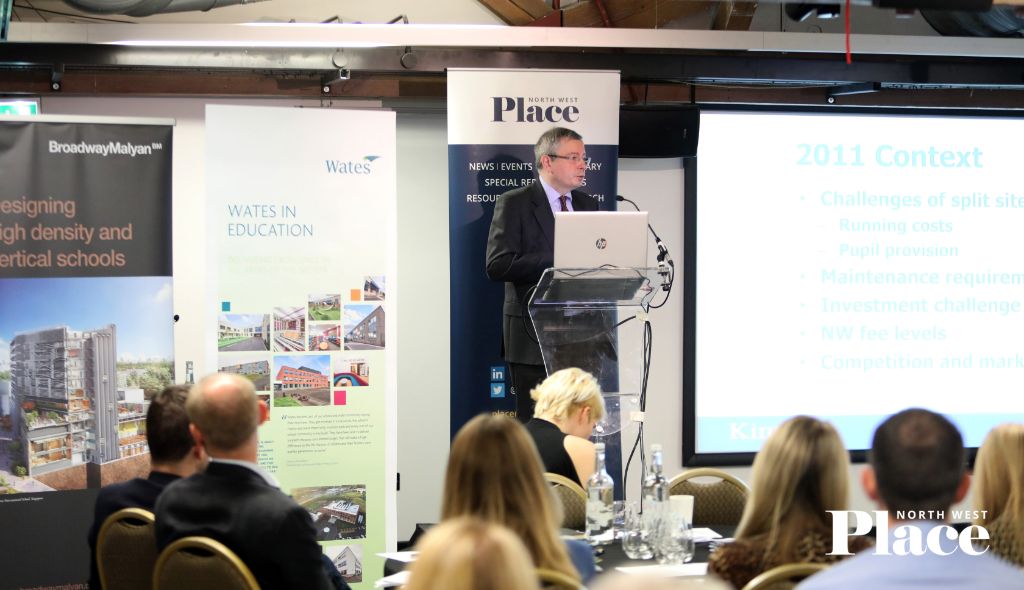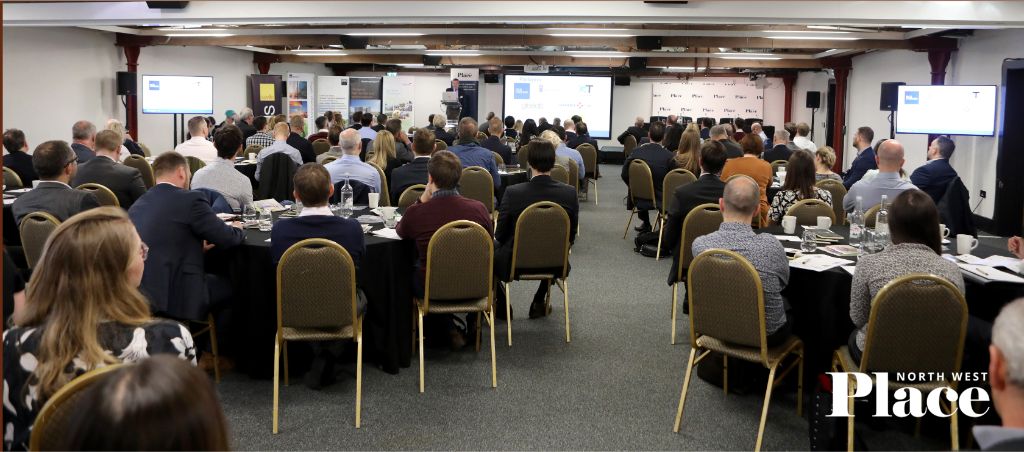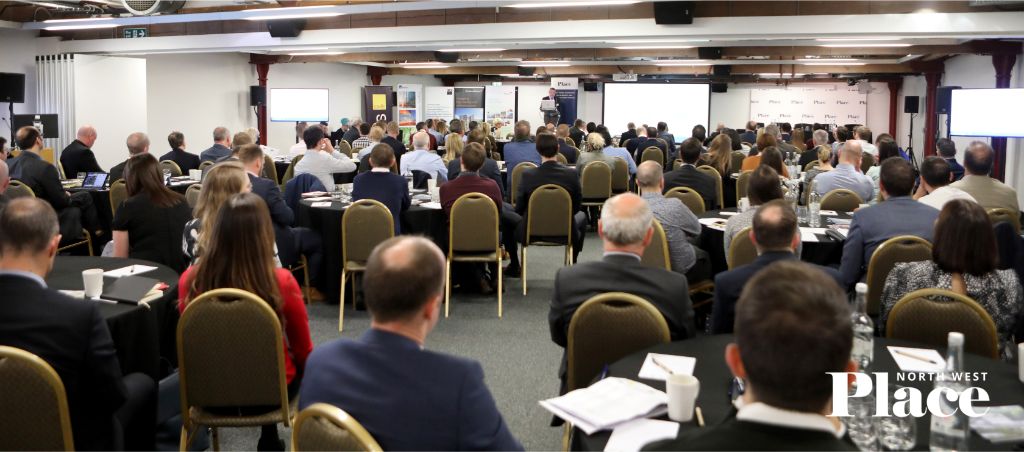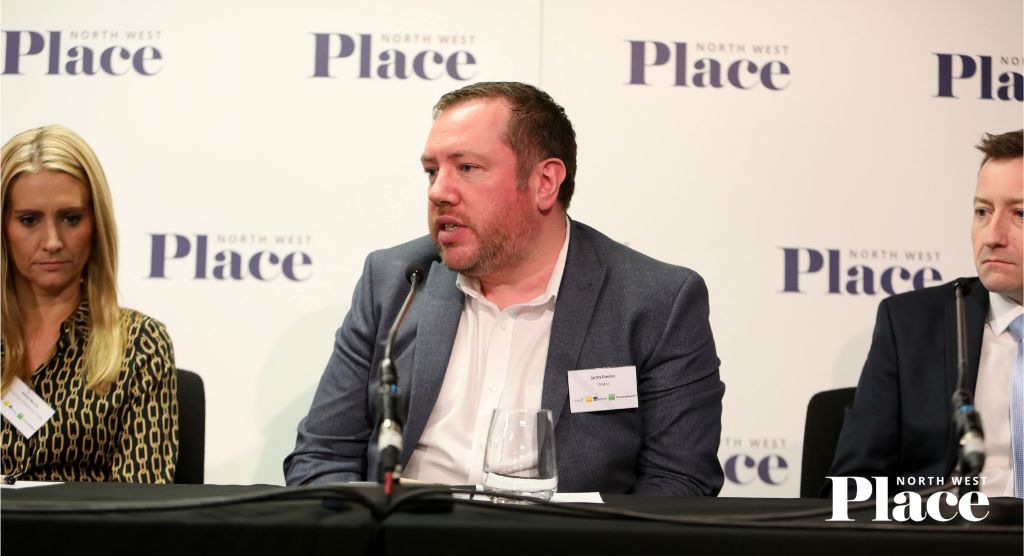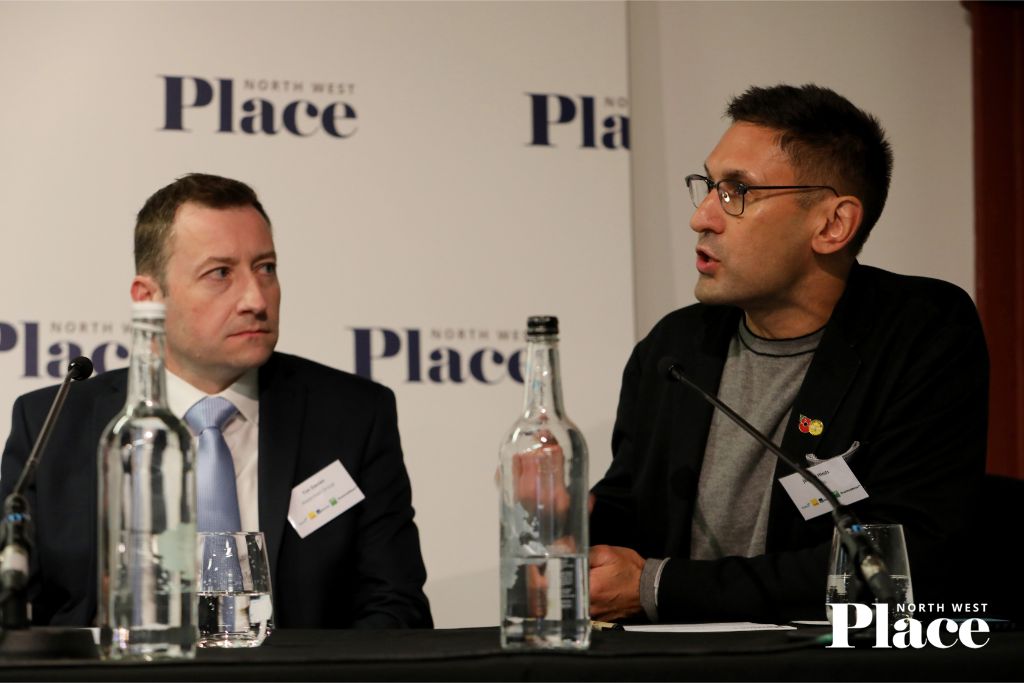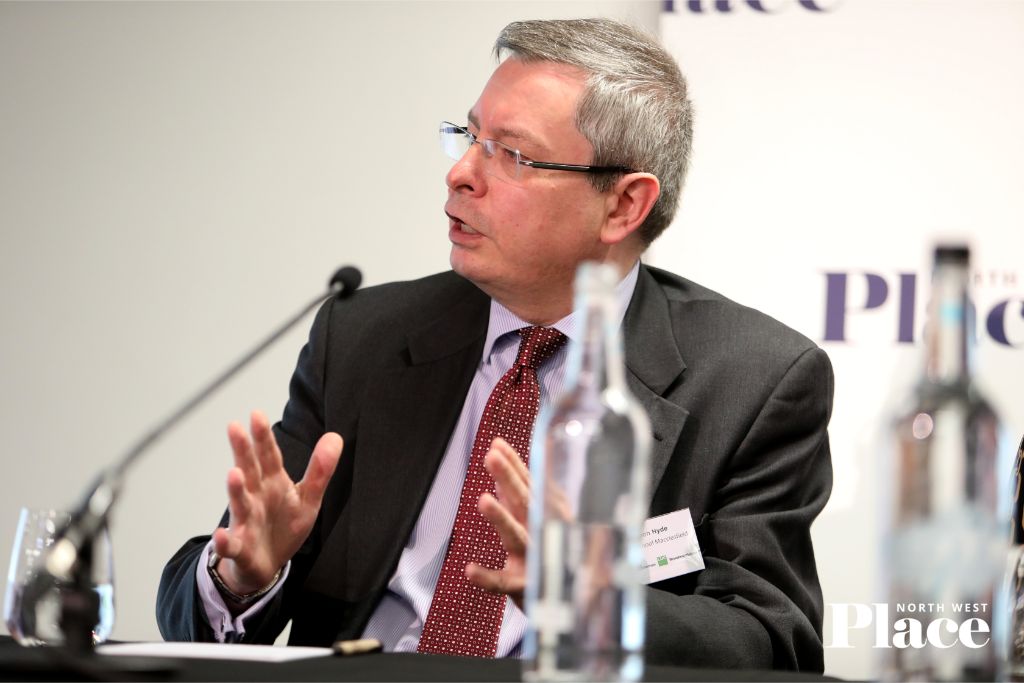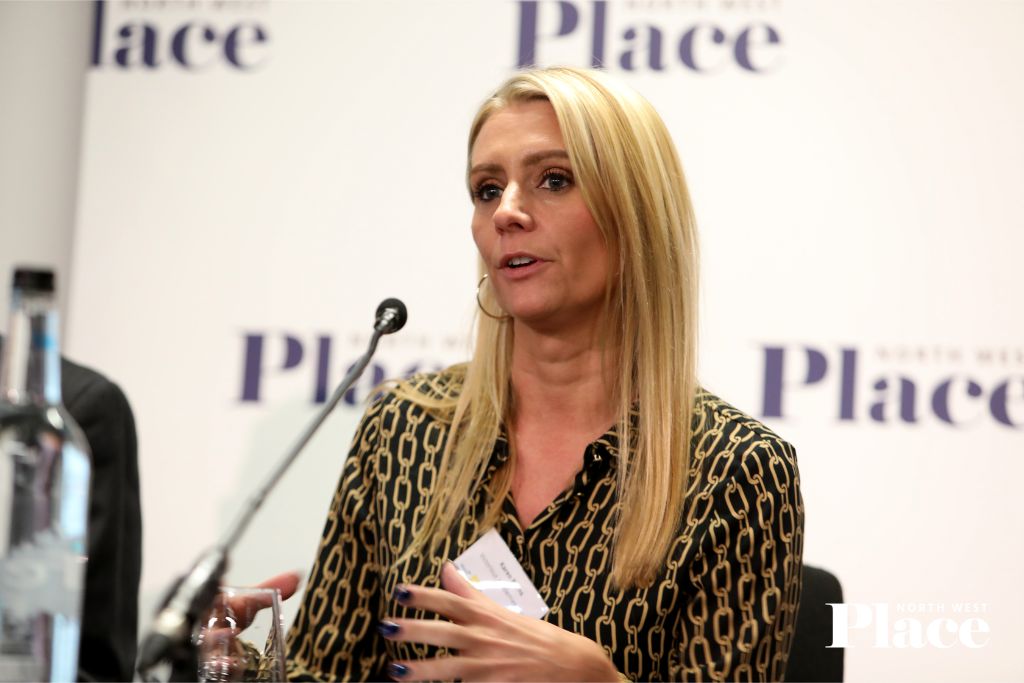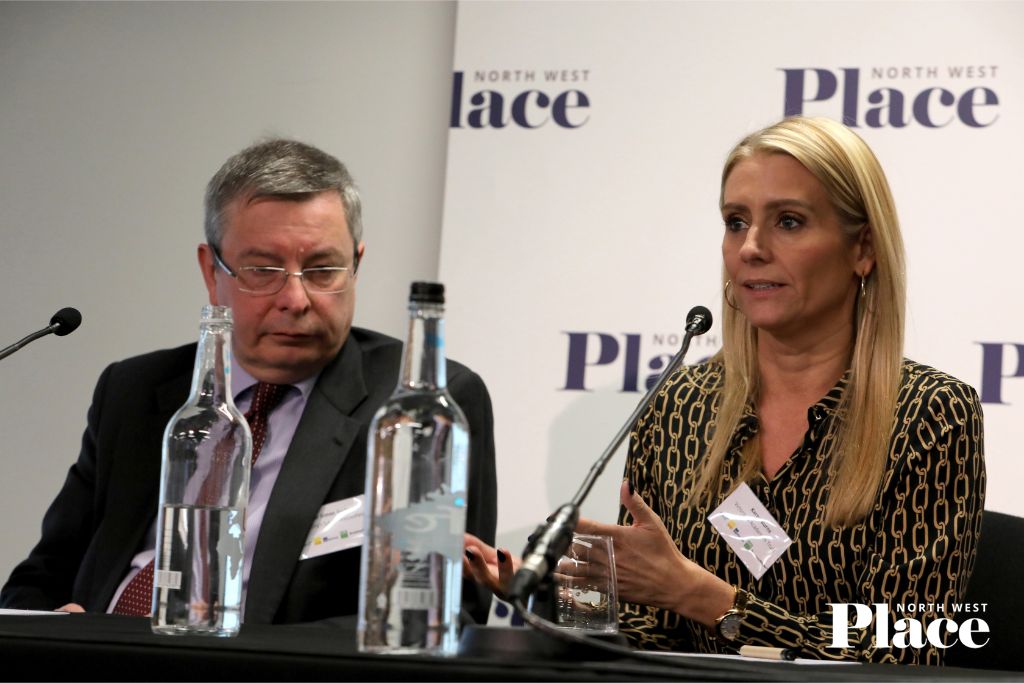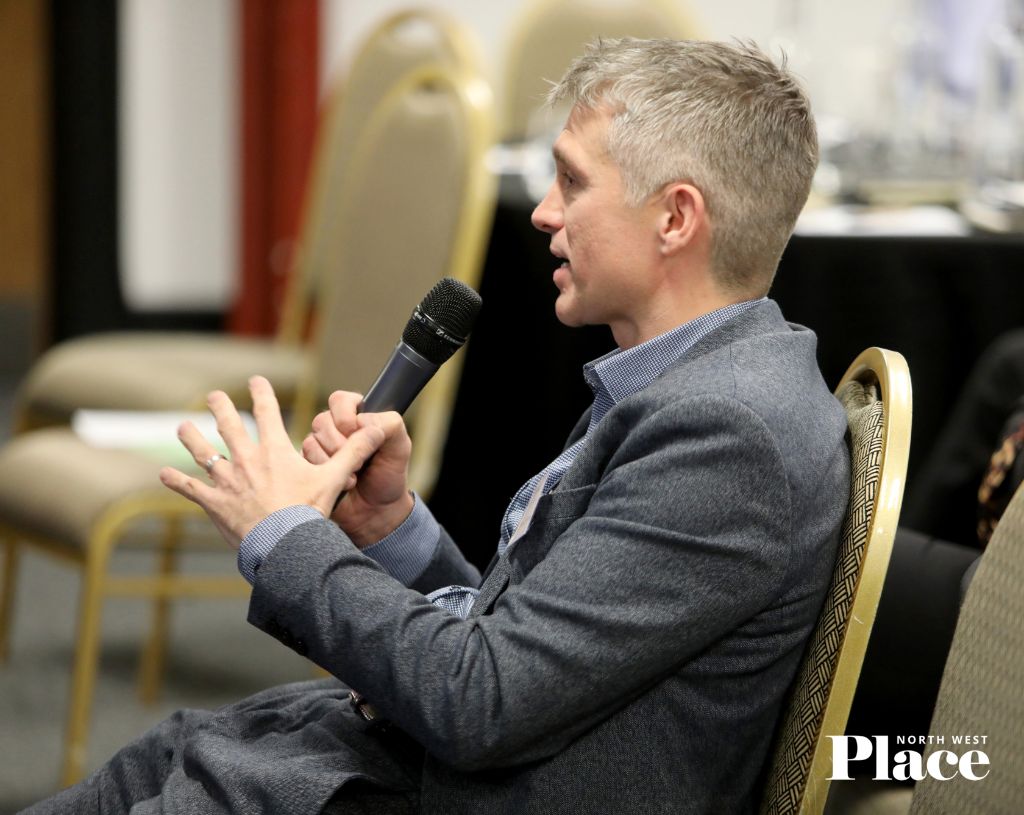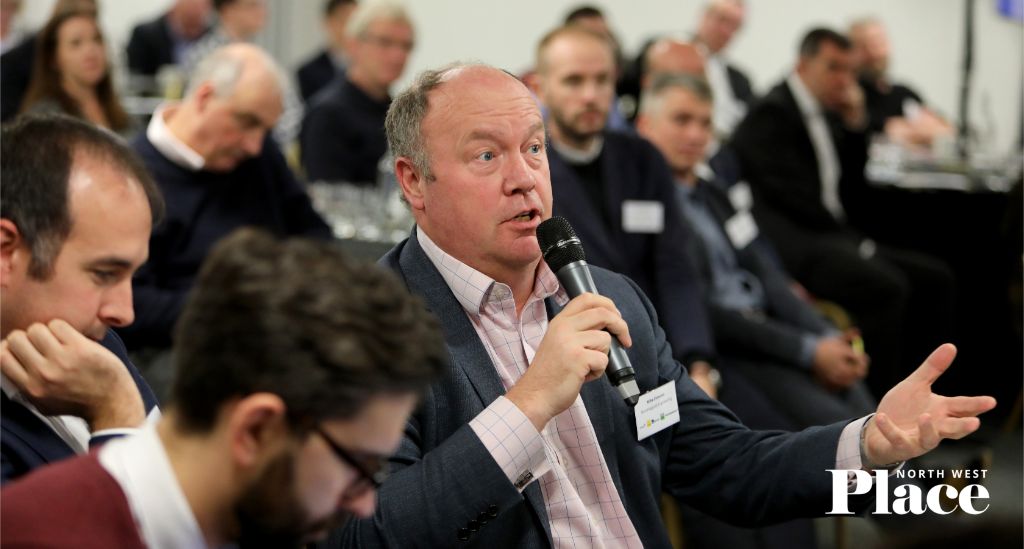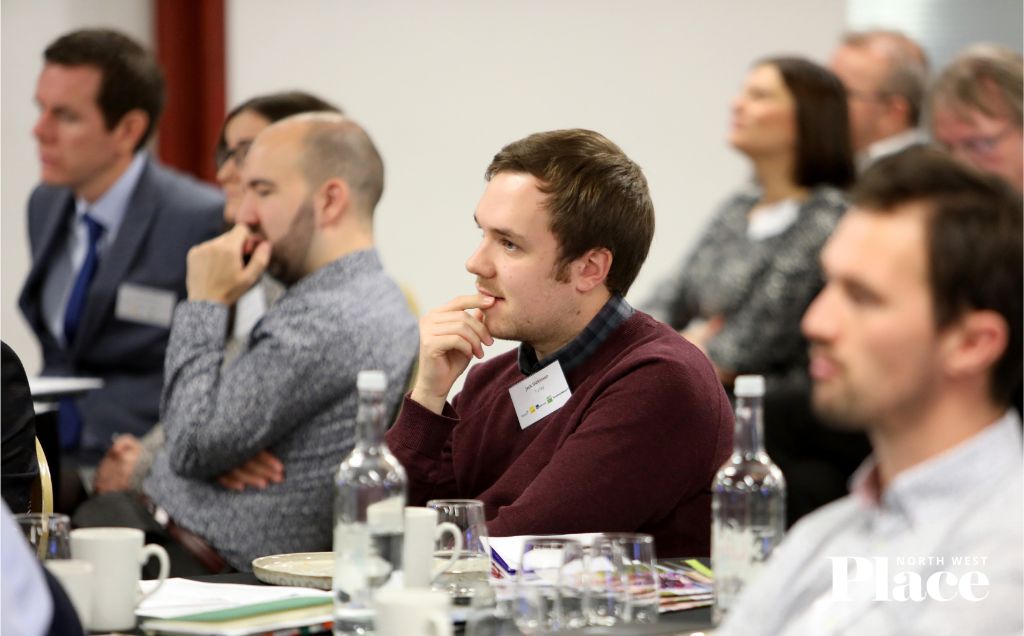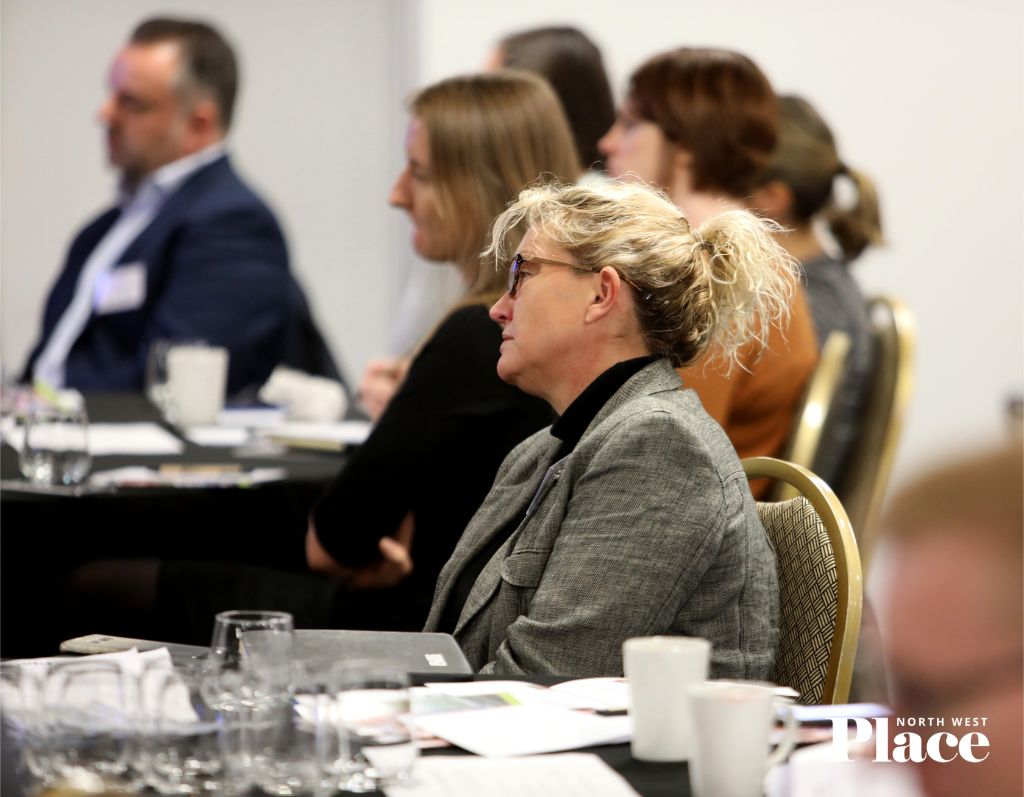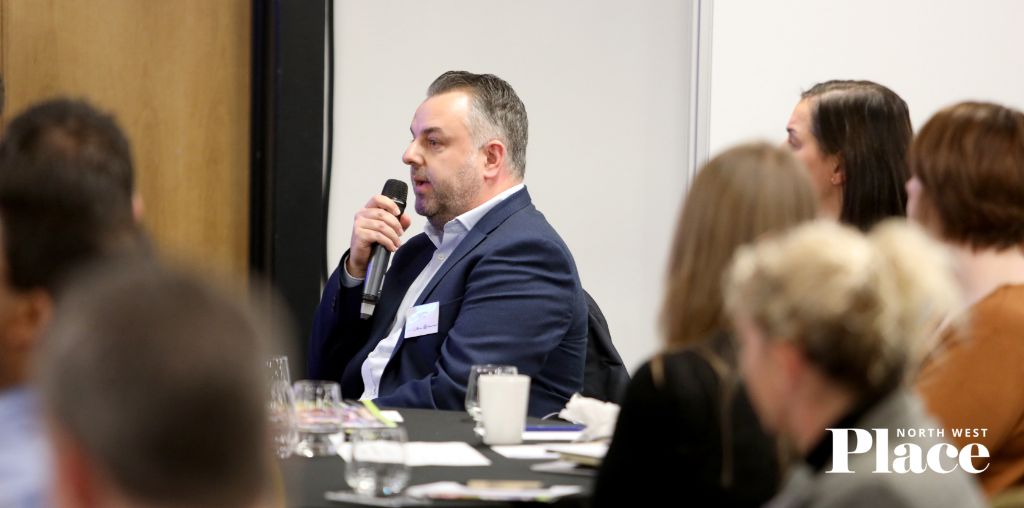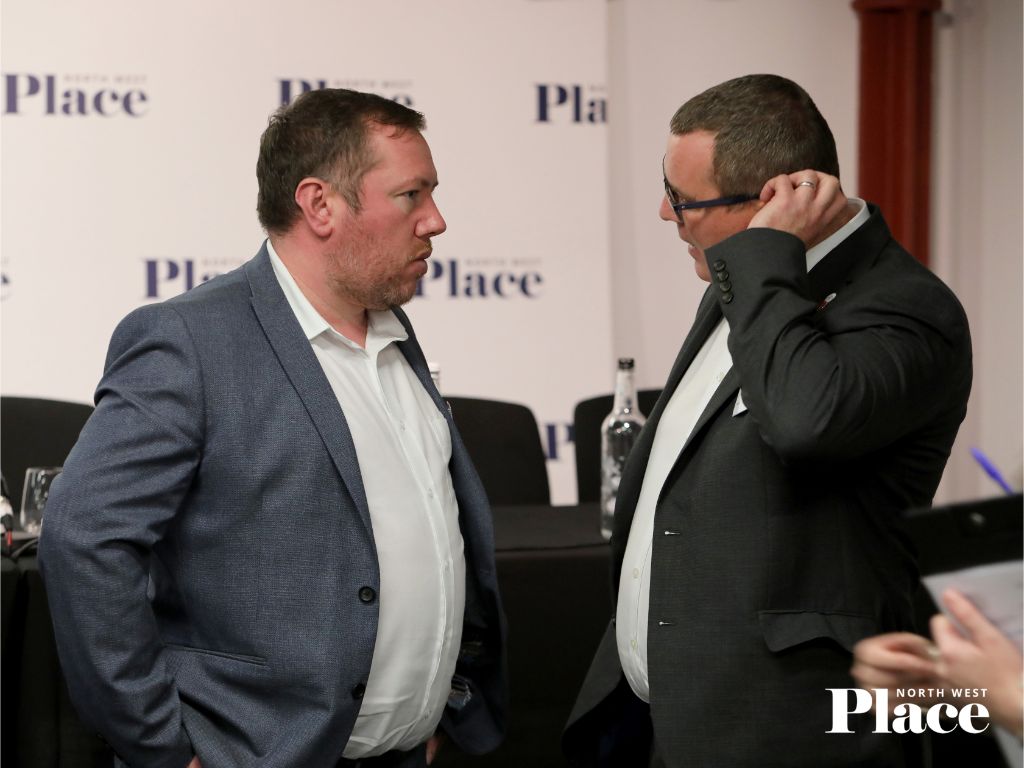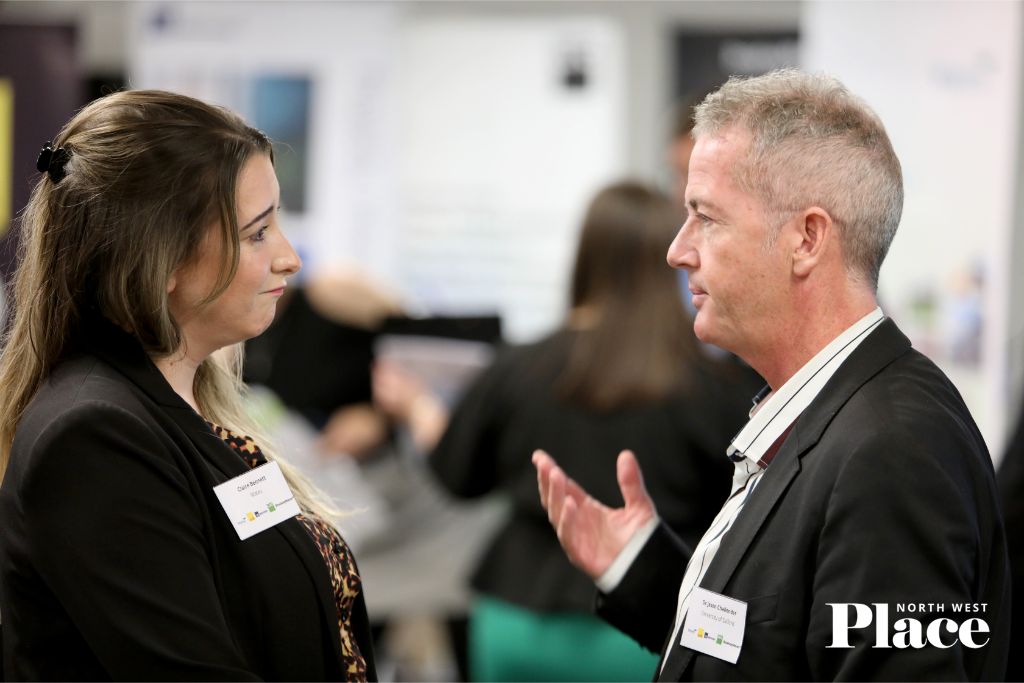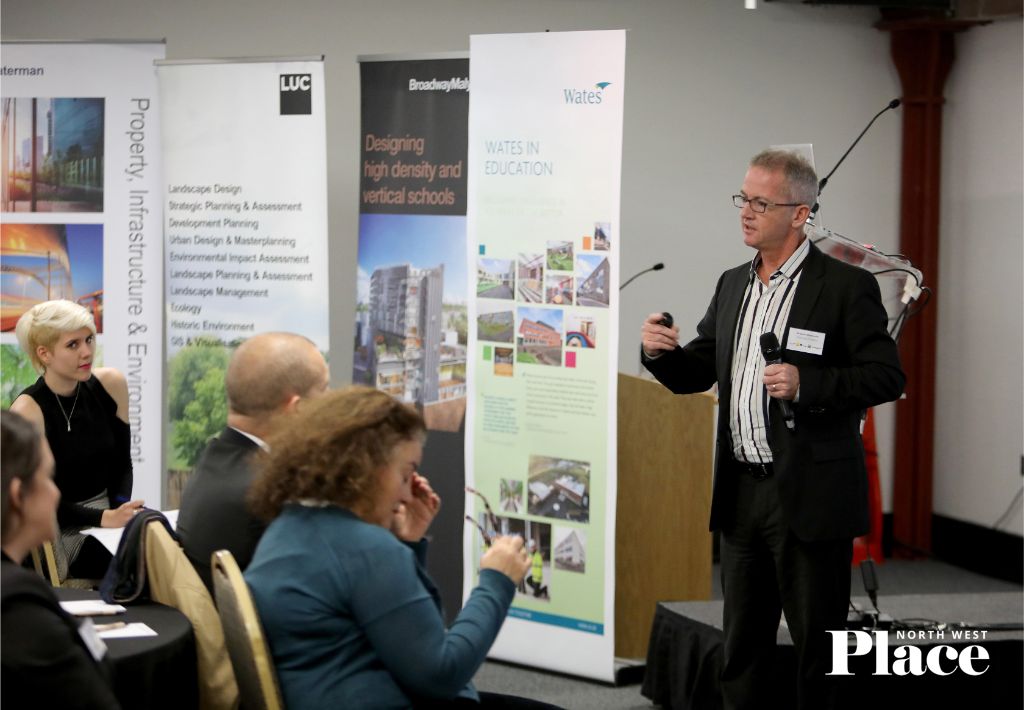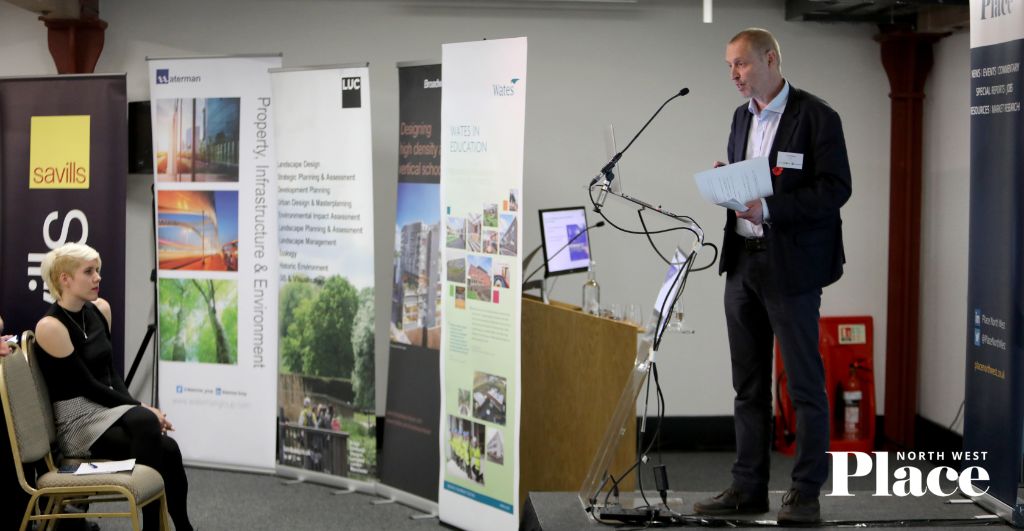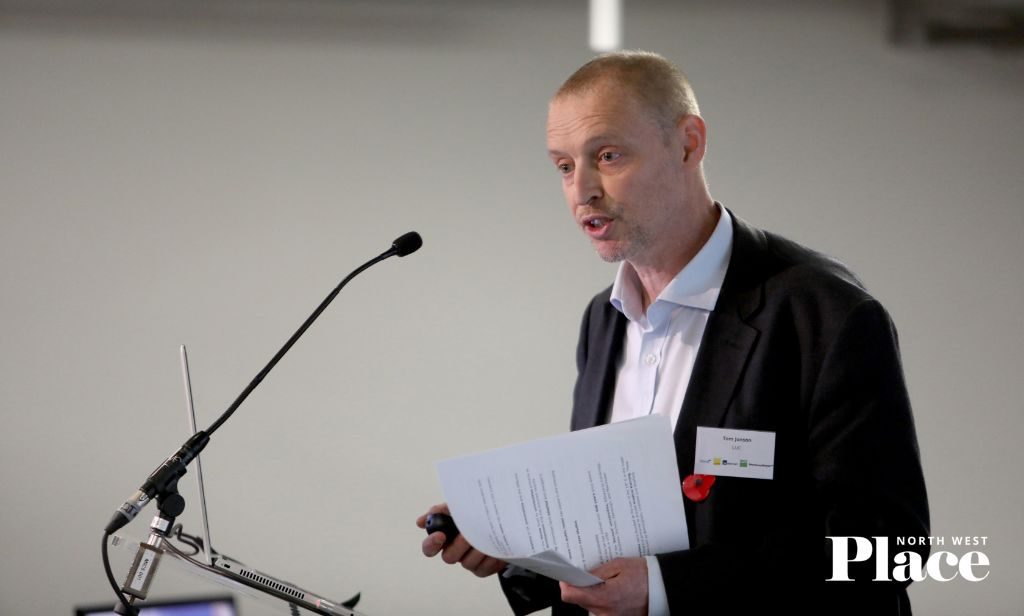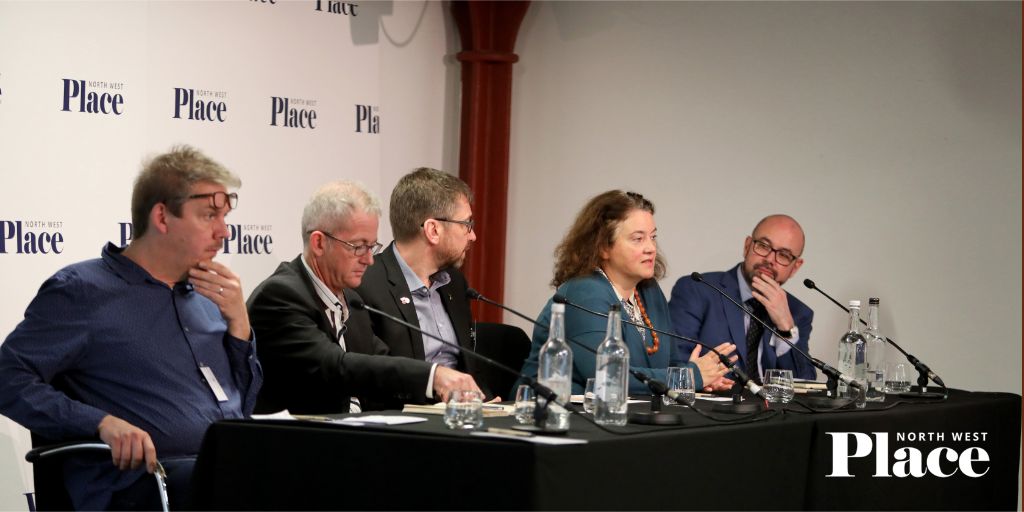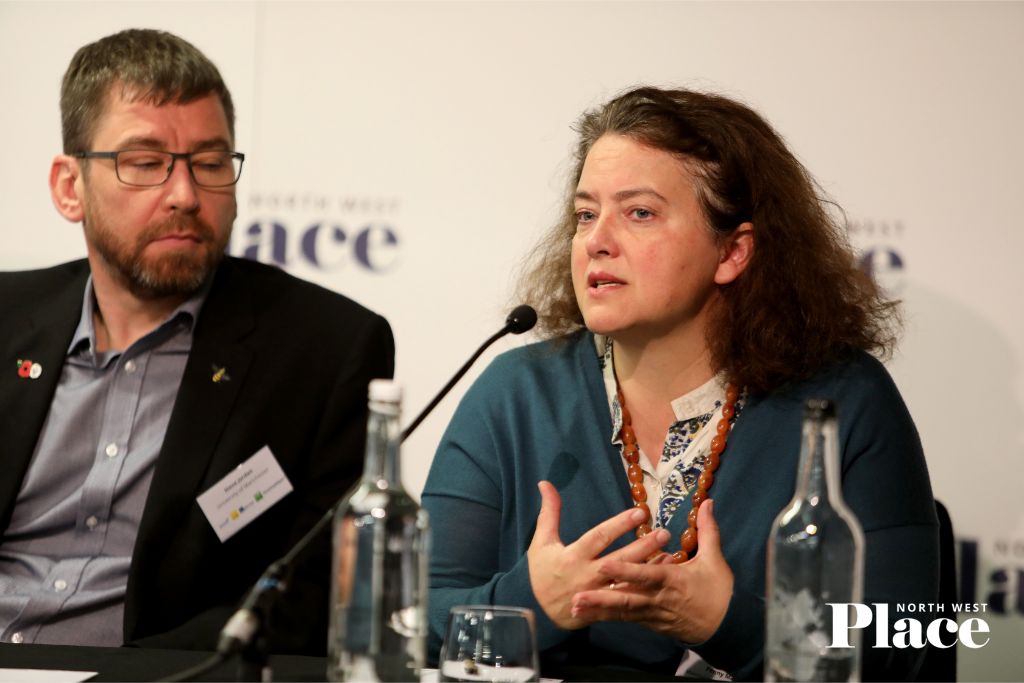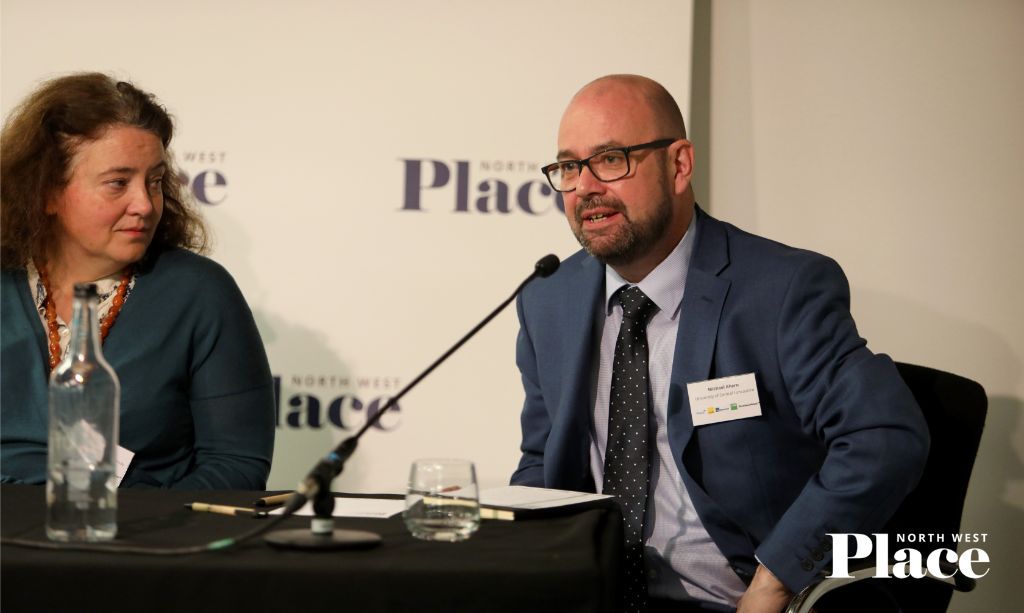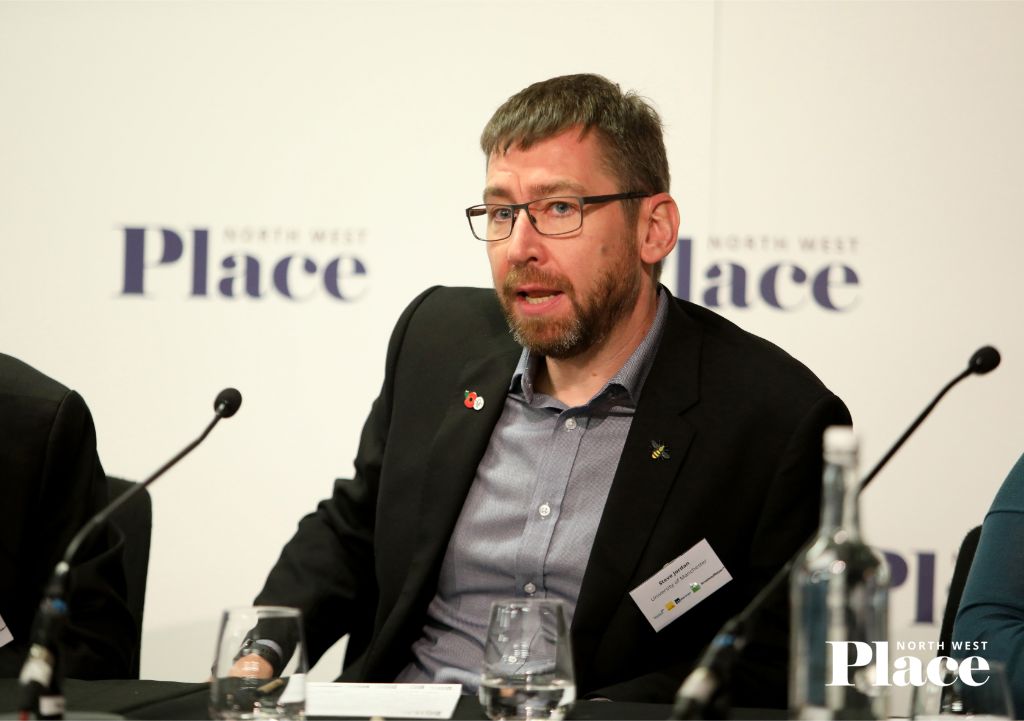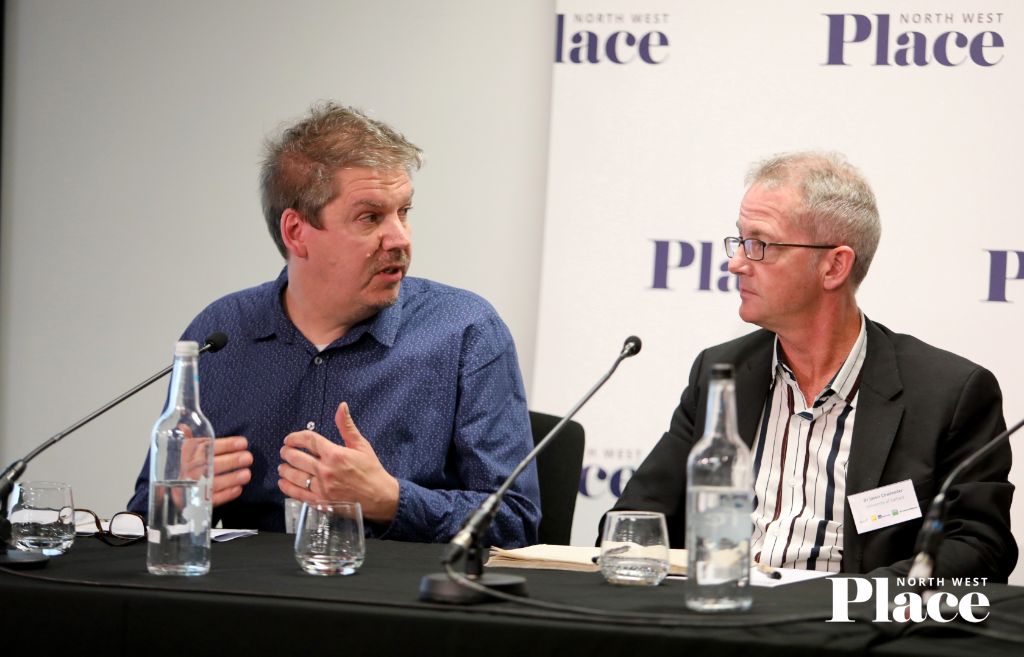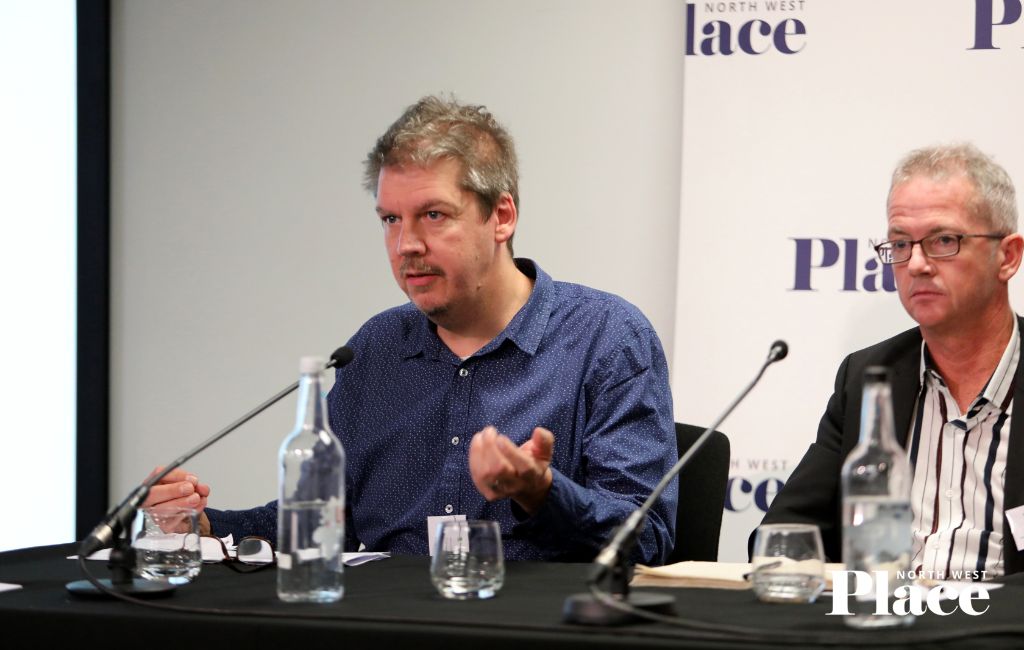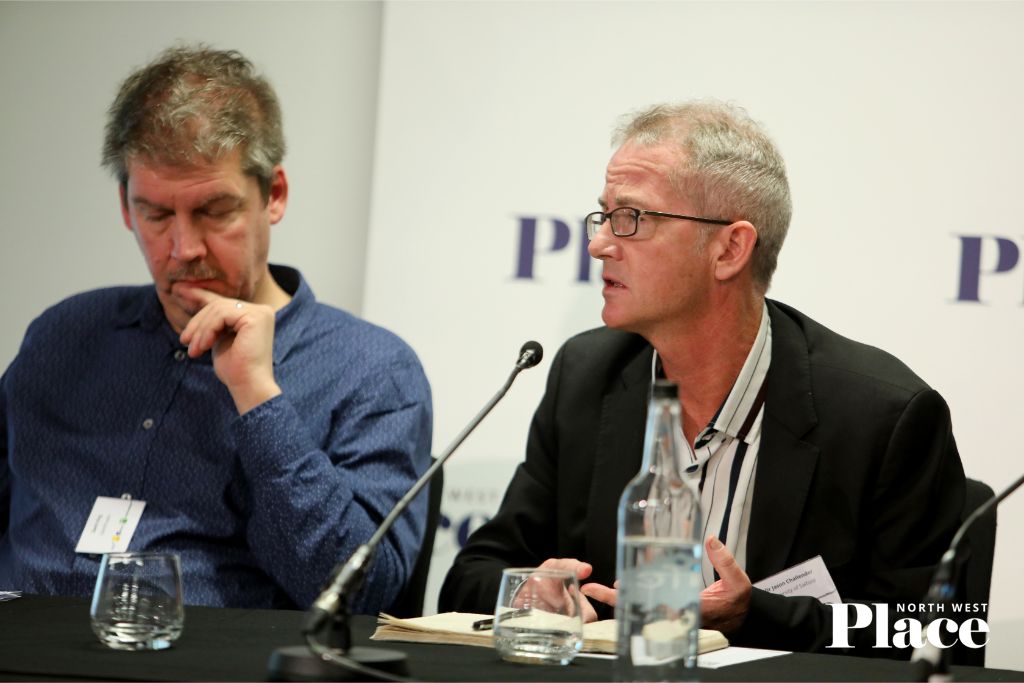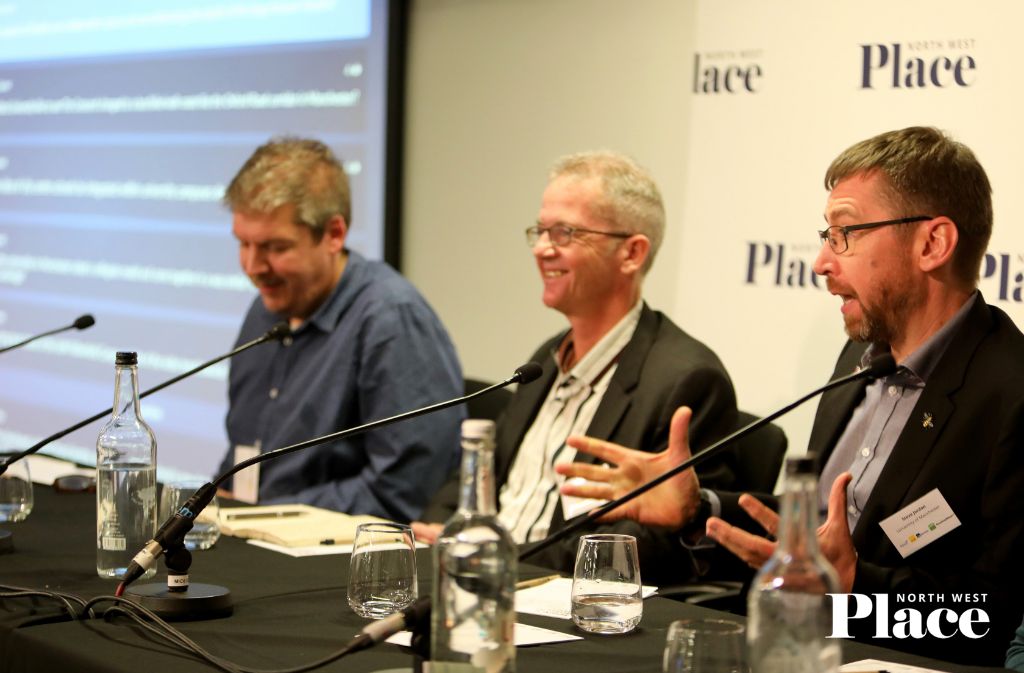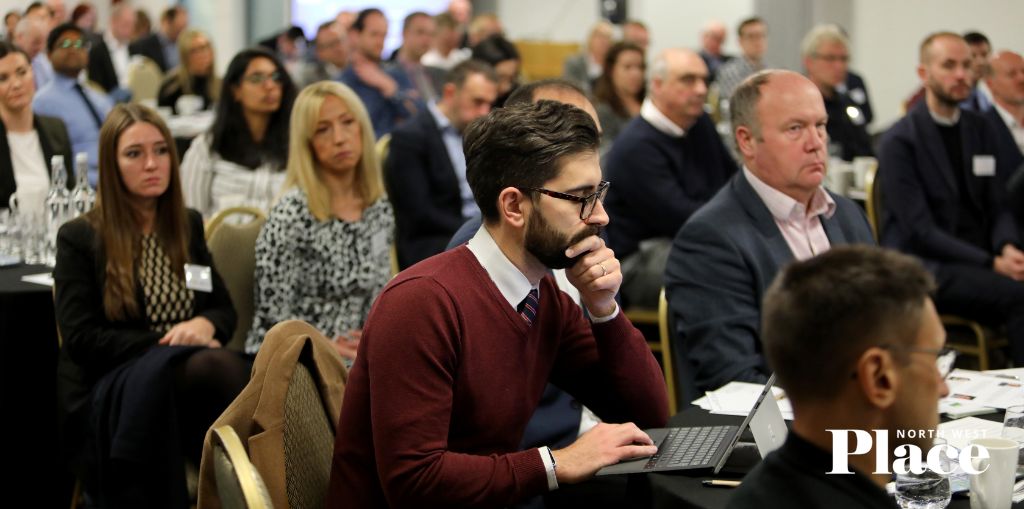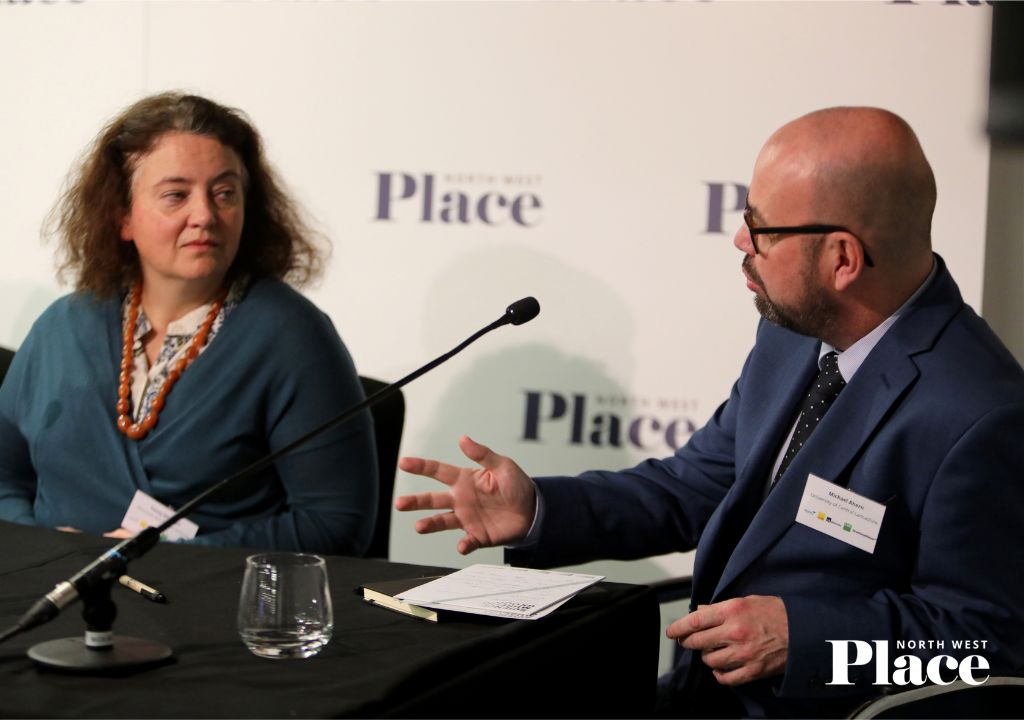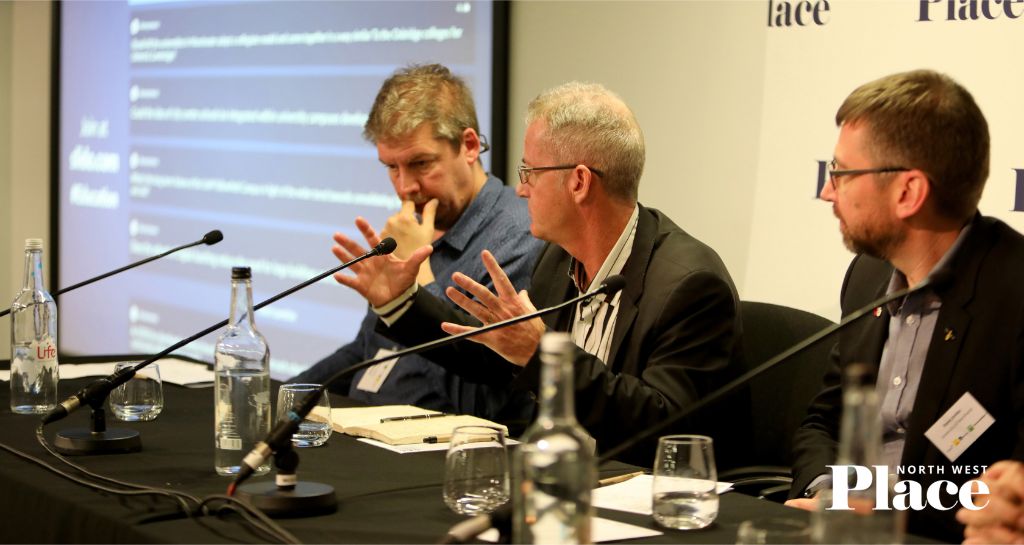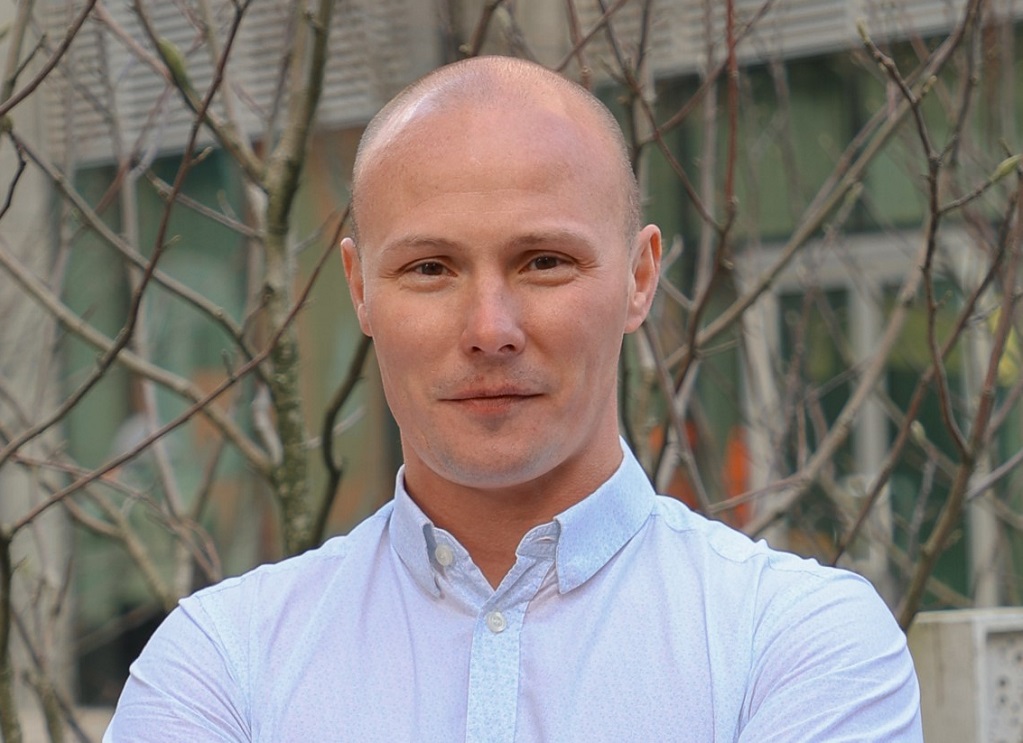Event Summary
Education Update | Summary, slides + photos
Communication and competition between universities, understanding the value of educational facilities, and making schools greener were the hot topics at this Place North West event.
Over 150 people attended the half-day conference at Manchester’s Science & Industry Museum, with speakers including Harry Hoodless, director at Broadway Malyan; Dr Simon Hyde, headmaster at The King’s School Macclesfield; John Foster, pre-construction director at Wates Group; Karen Burns, chief executive officer at Victorious Academies Trust; Tim Davies, director at Waterman Group; Jeremy Hinds, director at Savills; Dr Jason Challender, director of estates & facilities at the University of Salford; Tom Jonson, director of landscape architecture at LUC; Gavin King, director at SpaceInvader; Steve Jordan, head of capital projects at the University of Manchester; Penny Macbeth, dean of Manchester School of Art at Manchester Metropolitan University; and Michael Ahern, chief operating officer at University of Central Lancashire.
The event was sponsored by Wates, Savills, Waterman, LUC, and Broadway Malyan, and was chaired by Place North West editor Jessica Middleton-Pugh.
Building schools smarter
Harry Hoodless of Broadway Malyan delivered a presentation on how the UK could follow in the footsteps of countries such as Singapore or China and integrate schools into the community.
- “In China, the schools go in before the homes do; they are community anchors. As the North West is the most oversubscribed area for schooling in the UK, we can do better and build schools which are open to the local community with open libraries and gyms”
- “We need to rethink where we place schools,” he said. “We should try and get as much out of the land as possible, in a similar way to how we design offices with more storeys that utilise floor plates better”
- Hoodless said it’s about “building smarter”: “Schools can have retail or residential components so that we can broaden the offer and place them in city centres. It would transform retail, leisure, and social options for the pupils, their families, and the people who work there and develop a more connected society”
Unification and flexibility
Hoodless was followed by Dr Simon Hyde, the headmaster of The King’s School Macclesfield. He spoke about the development of a unified school in Macclesfield, and the challenges he has come across during the process.
- “We wanted to unify three school sites into one, and this came with multiple challenges, including where the site was going to be, how to navigate the Green Belt, how to build the school, and how do you actually fund the school without any money? We have a turnover of £14m per year, but the project was set to cost over £60m”
- “The school will be a launch pad when it completes in 2020. It will be functional as both a community centre and as a school resource and remain for the next 500 years, but retain its flexibility to adapt to the changes of society”
The future is people-focussed
Hyde then joined a panel featuring John Foster from Wates Group, Karen Burns from Victorious Academies Trust, Tim Davies from Waterman Group, and Jeremy Hinds from Savills.
- For Davies, the UK’s sustainability targets had set new parameters for the sector. “The Government’s 2050 commitment to net-zero carbon was pivotal, and this came with changes in UK legislation, both of which have set a certain way for us to develop. For the education sector this is likely to be a major factor and will make us question whether buildings will be usable, or if we’re going to have to demolish them and start again”
- Burns was questioned on why we don’t see schools in city centre contexts, to which she responded: “We’re behind other areas of the country and the world with multi-floor schools. That’s one of our main challenges with the lack of outdoor learning space. We are using all the internal space to capacity, and extend the site into the outdoor space, so we need to start thinking about making schools taller and utilising roofs”
- Hyde questioned how feasible this would be: “With the current levels of pollution in the city centre, would it be possible to put children on the roof? The children’s parents started off their lives in the city centre, and then they have children and move further out, so this might be why schools are located where they are”
- When asked if we could repurpose failing shopping centres, Hinds responded: “It wouldn’t be impossible to do, but then it becomes a question on a commercial deal and who owns the site. If it is a pension fund or an individual, other issues arise and it’s all dependent. Ultimately, we need a shift of thinking, to create a network of buildings to create schools in the city centre and reduce capital needs, so we can provide for buildings in more expensive locations”
- Following on from Hinds, Foster said: “There is a strong desire to change, including how schemes are procured as they’re typically cost driven. From a contractor’s point of view, a key challenge is balancing the cost with the longevity, as schools have to operate for a long time after we leave and it’s important that they last.” He then went on to say that we can be innovative with sites as Wates “recently completed a development on the site of a previous landfill. It’s about sourcing and potential”
- Burns also raised the problem of school accessibility: “If a school is good, then the housing surrounding it will be expensive because access will drive the market. Subsequently, the schools that aren’t as good will have more affordable houses by them, and parents have no choice but to send there children to them. We have to be mindful of social mobility, or schooling will become a class race”

From left: Dr Simon Hyde, headmaster at The King’s School Macclesfield; Karen Burns, chief executive at Victorious Academies Trust; John Foster, pre-construction director at Wates Group; Tim Davies, director at Waterman Group; and Jeremy Hinds, director at Savills
Outward regeneration
Dr Jason Challender, director of estates & facilities at the University of Salford, gave a presentation on the university’s £800m masterplan.
- “The way the campus is designed is an issue as it has both a motorway and a train station in the middle of it. The masterplan calls for a new station, which we would use to also create a pathway between the two sections of campus. We want to regenerate the whole area and not just keep the university in a bubble”
- “Futureproofing the buildings by ensuring that they are flexible is key,” Challender said. “However, we also need to look to the future and be innovative. We have plans for a robotics centre which will start on site next September, and Energy House 2.0 which can test buildings to see how they perform under controlled conditions, which will start on site in March 2020”
- “There is a perception that Salford hasn’t changed because outwardly facing the M602 and the slip road are the same buildings. Flair and innovation for us is just as important as costs, so during the design process for the arts and culture hub at the redevelopment of the Maxwell Hall building we ensured it was a major part of the brief. Flanagan Lawrence ultimately won the scheme, which does exactly that”
The importance of public realm
Following Challender was Tom Jonson, director of landscape architecture at LUC. His presentation explained the role of the public realm as a bridging tool between universities and the local area.
- “There are challenges surrounding universities no matter how old or where they are. Car parking is one such issue, as they’re typically built away from the buildings and it dominates space. Also, as universities have expanded, they have developed buildings with conflicting architectural typologies which has eroded the sense of place and identity in the area. It has also created a disconnect and separation between parts of the campus making them difficult to navigate”
- Jonson explained that modernising campuses would have a “transformative impact on students, staff and visitors to the campus as it can have the ability to create identity and a sense of place with cohesion between the buildings, public realm, and society”
- “The benefits of green infrastructure for city universities can’t be understated” he said. “It also creates some resilience against climate change. An example of this is the creation of more rain gardens which can ameliorate flooding and temperature changes. Public open space is in short supply in most cities, so it also manages to bring back nature into the city, improve health and wellbeing”
Masterplanning and regeneration
Challender joined a panel with Penny Macbeth from Manchester Metropolitan University, Gavin King from SpaceInvader, Steve Jordan from the University of Manchester, and Michael Ahern from UCLan.
- For Manchester Metropolitan University, having a finger on the pulse of society has driven its recent development according to Macbeth. “We’re about to break ground on SODA, the School of Digital Arts, which has come from a £35m investment from the university and the GMCA. Tech and digital are two of the fastest growing sectors and we need to address the skills shortage in the North West and the UK generally”
- For Ahern at UCLan, political debates have shaped education for the past few years, and this is likely to continue. “We want to attract the best and brightest, and the introduction of stay visas has helped with this. However, the political environment has dissuaded institutions from taking risks in terms of financing students and from beginning developments. The North West is particularly strong in terms of education and we need to maintain this level as just the construction of educational facilities is worth £12bn to the economy”
- The University of Manchester started its £1bn masterplan in 2012 and according to Jordan, it is two thirds of the way through in both spend and number of developments. “The biggest single project is our MECD, the Manchester Engineering Campus Development. It has cost £17,000 for every hour spent on site, but it will allow us to transform our campus into a single site.” Earlier this year, the University of Manchester opened the development competition for ID Manchester, a 26-acre site near Piccadilly Railway Station the engineering faculty is relocating from
- For Challender, a major challenge was sourcing funds: “There are possible players yet to be decided on funding the developments. For the masterplan, funding will come from a combination of university funds, grant funding, the sale of university owned plots, alumni donations, and council funding”
- King explained “treating people who work in education as humans” leads to better results. “What is needed up front is engagement, and you need to bring commercial solutions to the educational sector. Ask people how they work and what they need upfront allows you to unlock real potential when it comes to designing better spaces”
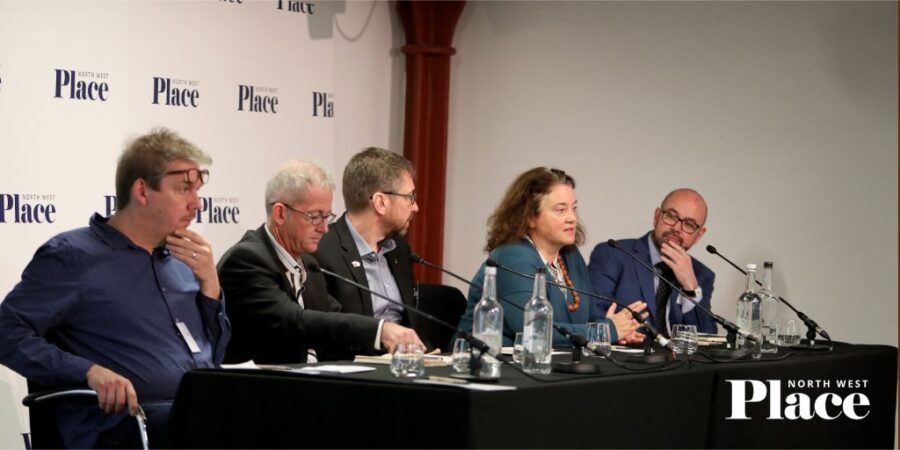
From left: Gavin King, director at SpaceInvader; Dr Jason Challender, director of estates & facilities at the University of Salford; Steve Jordan, head of capital projects at the University of Manchester; Penny Macbeth, dean of Manchester School of Art at Manchester Metropolitan University; and Michael Ahern, chief operating officer at the University of Central Lancashire
The presentation slides can be accessed below:
Harry Hoodless, Broadway Malyan
Dr Simon Hyde, The King’s School
Tickets are on sale for Place North West’s Education Update 2020. Book here.
Find details of all upcoming Place events here.
Click any image below to launch gallery
- Harry Hoodless, director at Broadway Malyan
- Harry Hoodless, director at Broadway Malyan
- Harry Hoodless, director at Broadway Malyan
- Dr Simon Hyde, headmaster at The King's School Macclesfield
- Dr Simon Hyde, headmaster at The King's School Macclesfield
- Dr Simon Hyde, headmaster at The King's School Macclesfield
- Dr Simon Hyde, headmaster at The King's School Macclesfield
- From left: Dr Simon Hyde, headmaster at The King's School Macclesfield, Karen Burns, chief executive officer at Victorious Academies Trust, John Foster, pre-construction director at Wates Group; Tim Davies, director at Waterman Group; and Jeremy Hinds, director at Savills
- John Foster, pre-construction director at Wates
- Tim Davies, director at Waterman Group and Jeremy Hinds, director at Savills
- Dr Simon Hyde, headmaster at The King's School Macclesfield
- Tim Davies, director at Waterman Group
- Karen Burns, chief executive of Victorious Academies Trust
- Dr Simon Hyde, headmaster of The King's School Macclesfield and Karen Burns, chief executive of Victorious Academies Trust
- From left: Dr Simon Hyde, headmaster at The King's School Macclesfield, Karen Burns, chief executive officer at Victorious Academies Trust, John Foster, pre-construction director at Wates Group; Tim Davies, director at Waterman Group; and Jeremy Hinds, director at Savills
- Dr Jason Challender, director of estates and facilities at the University of Salford
- Dr Jason Challender, director of estates and facilities at the University of Salford
- Tom Jonson, director of landscape architecture at LUC
- Tom Jonson, director of landscape architecture at LUC
- From left; Gavin King, director at SpaceInvader, Dr Jason Challender, director of estates & facilities at the University of Salford, Steve Jordan, head of capital projects at the University of Manchester, Penny Macbeth, dean of Manchester School of Art at the University of Manchester and Michael Ahern, chief operating officer at the University of Central Lancashire
- Penny Macbeth, dean of Manchester School of Art at Manchester Metropolitan University
- Michael Ahern, chief operating officer at the University of Central Lancashire
- Steve Jordan, head of capital projects at the University of Manchester
- Gavin King, director at SpaceInvader and Dr Jason Challender, director of estates & facilities at the University of Salford
- Gavin King, director at SpaceInvader and Dr Jason Challender, director of estates & facilities at the University of Salford
- Gavin King, director at SpaceInvader and Dr Jason Challender, director of estates & facilities at the University of Salford
- From left; Gavin King, director at SpaceInvader, Dr Jason Challender, director of estates & facilities at the University of Salford, and Steve Jordan, head of capital projects at the University of Manchester
- Penny Macbeth, dean of Manchester School of Art at the University of Manchester and Michael Ahern, chief operating officer at the University of Central Lancashire
- From left; Gavin King, director at SpaceInvader, Dr Jason Challender, director of estates & facilities at the University of Salford, and Steve Jordan, head of capital projects at the University of Manchester




